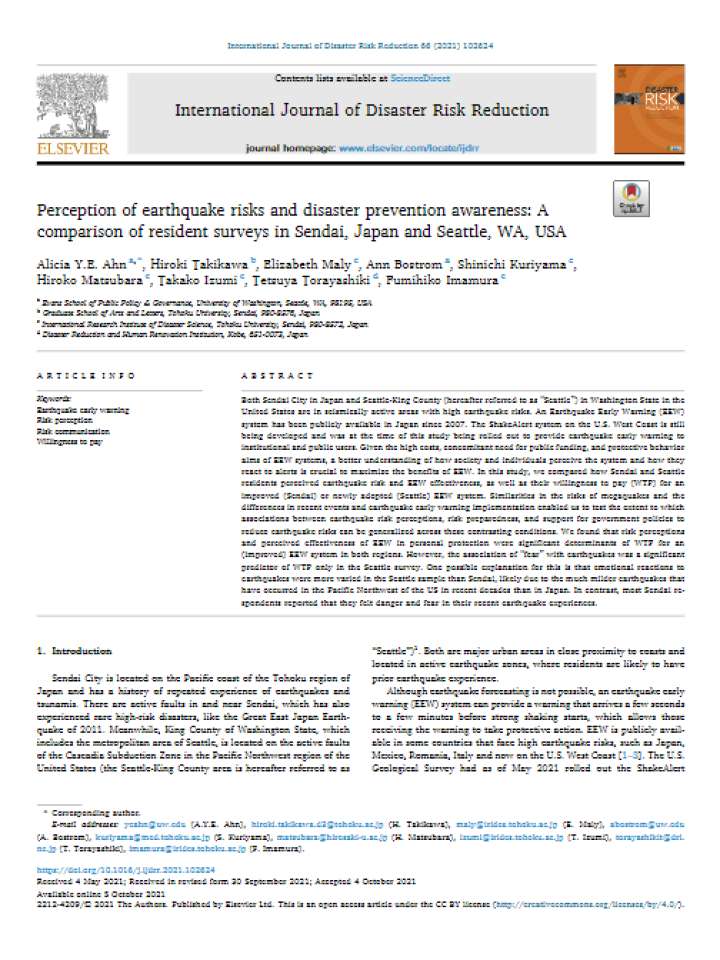Perception of earthquake risks and disaster prevention awareness: A comparison of resident surveys in Sendai, Japan and Seattle, WA, USA
This study compares how earthquake risk and Earthquake Early Warning (EEW) effectiveness is perceived by residents in Sendai City in Japan and Seattle-King County (hereafter referred to as “Seattle”) in Washington State in the United States, as well as their willingness to pay (WTP) for an improved (Sendai) or newly adopted (Seattle) EEW system. Given the high costs, concomitant need for public funding, and protective behavior aims of EEW systems, a better understanding of how society and individuals perceive the system and how they react to alerts is crucial to maximize the benefits of EEW. An EEW system has been publicly available in Japan since 2007, while the ShakeAlert system on the U.S. West Coast is still being developed and was at the time of this study being rolled out to provide earthquake early warning to institutional and public users. Both Sendai and Seattle are in seismically active areas with high earthquake risks. Similarities in the risks of megaquakes and the differences in recent events and earthquake early warning implementation enables the study to test the extent to which associations between earthquake risk perceptions, risk preparedness, and support for government policies to reduce earthquake risks can be generalized across these contrasting conditions.
The study found that risk perceptions and perceived effectiveness of EEW for personal protection are significantly and positively associated with WTP for an (improved) EEW system in both regions. However, the association of “fear” with earthquakes was a significant predictor of WTP only in the Seattle survey. One possible explanation for this is that emotional reactions to earthquakes were more varied in the Seattle sample than Sendai, likely due to the much milder earthquakes that have occurred in the Pacific Northwest of the US in recent decades than in Japan. In contrast, most Sendai respondents reported that they felt danger and fear in their recent earthquake experiences.
Explore further
